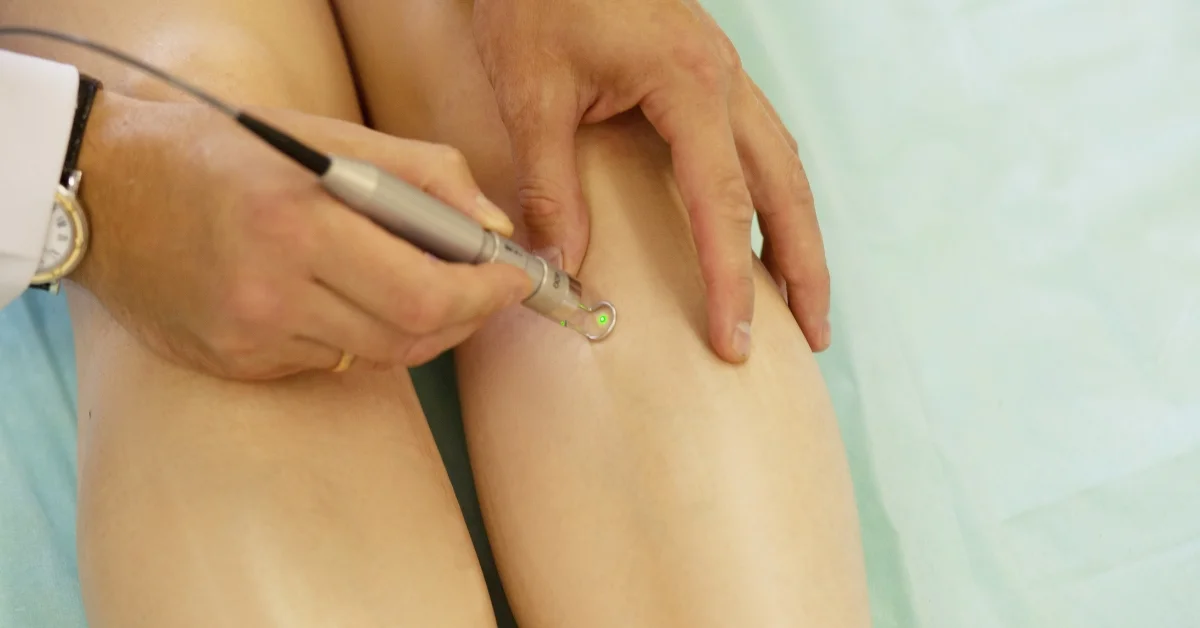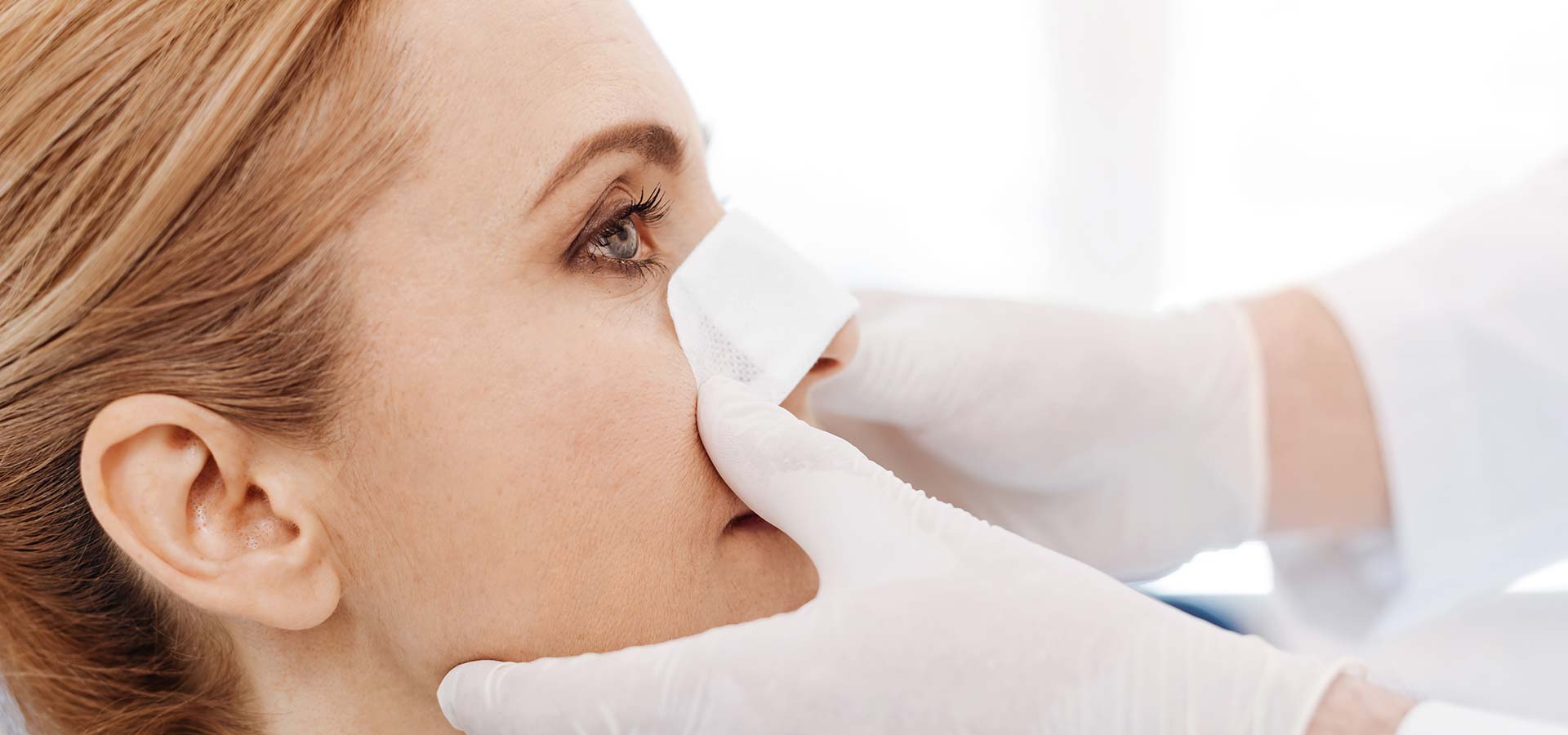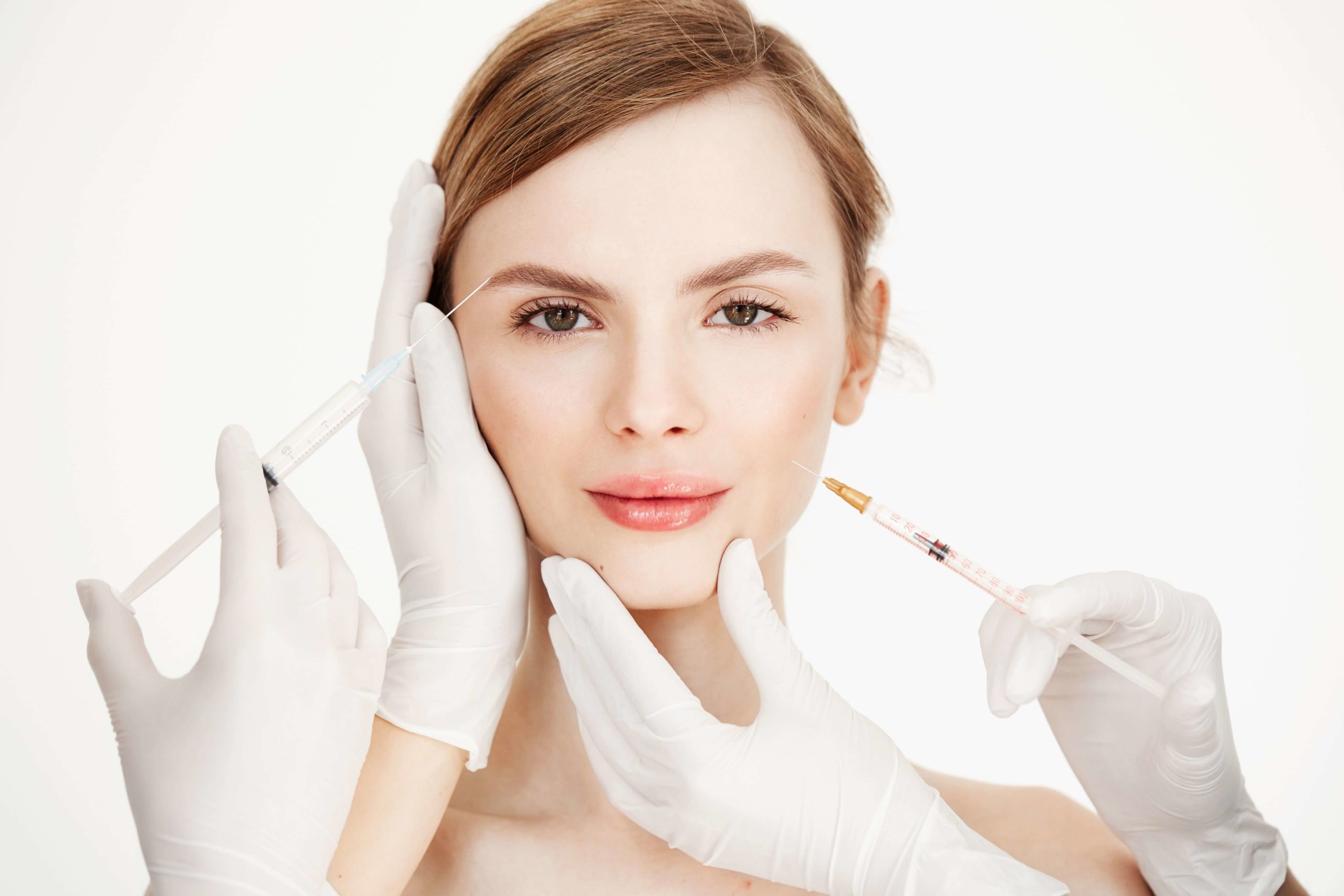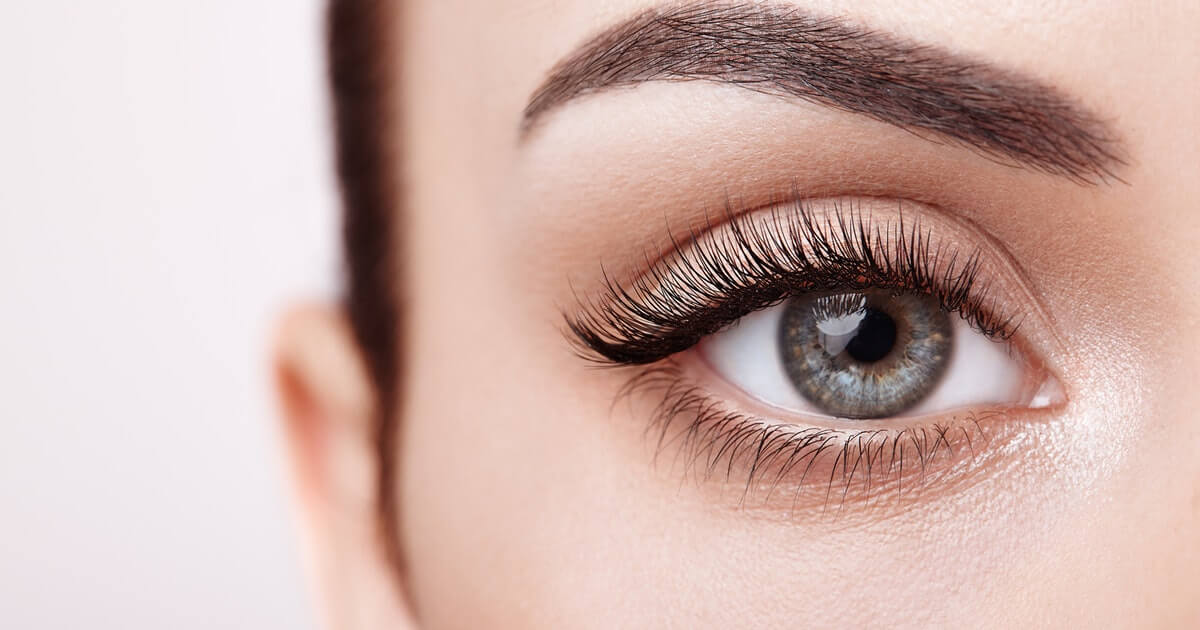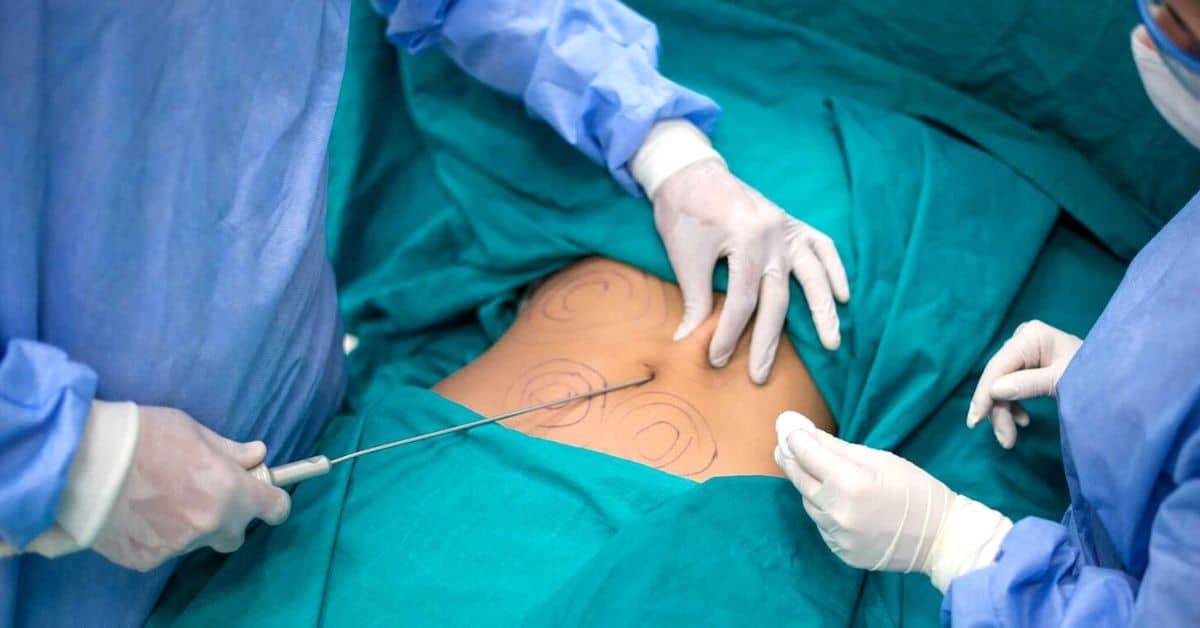Are you tired of dealing with painful varicose veins that keep you from fully enjoying life? Imagine a treatment that offers relief from the discomfort and unsightly appearance of varicose veins without the need for invasive surgery or extended recovery periods.
Enter Endovenous Laser Ablation (EVLA) – a cutting-edge, minimally invasive procedure that has revolutionized the way we treat varicose veins. In this remarkable technique, the power of laser technology is harnessed to close off damaged veins from the inside out, allowing you to bid farewell to those troublesome veins and embrace a renewed sense of comfort and confidence.
What Is Endovenous Laser Ablation?
Endovenous Laser Ablation (EVLA) is a minimally invasive procedure used to treat varicose veins. This procedure uses laser energy to cauterize (burn) and close the abnormal veins. Unlike traditional methods, it is performed under local anesthesia, causing minimal discomfort, and has a short recovery period.
Introduced in the late 1990s, this method has revolutionized the treatment of varicose veins and venous insufficiency.
Conditions That Endovenous Laser Ablation Treat
Endovenous Laser Ablation is primarily used to treat varicose veins, a condition where veins become enlarged, dilated, and overfilled with blood. They often appear raised and blue or dark purple and can be painful.
Varicose veins are a common condition, affecting approximately 23% of adults in the US. EVLA can also treat chronic venous insufficiency, a condition that prevents blood from flowing back to the heart from the legs.
How Does The EVLA Procedure Work?
EVLA is a minimally invasive medical procedure used to treat varicose veins, which are enlarged and swollen veins commonly found in the legs. The purpose of the EVLA procedure is to close the damaged vein and reroute the blood flow to healthier veins, relieving the symptoms and appearance of varicose veins.
Here’s how the EVLA procedure works:
- Preparation: Before the procedure, the patient is usually given a local anesthetic to numb the area where the affected vein is located. This guarantees that the patient maintains a level of comfort throughout the treatment.
- Guiding the Laser Fiber: To access the damaged vein, a tiny cut or incision is made in the skin, usually near the knee or thigh. A thin laser fiber is then inserted into the vein through the incision. The fiber is guided using ultrasound imaging to precisely position it within the vein.
- Laser Ablation: Once the laser fiber is in place, it emits laser energy directly into the varicose vein. The energy from the laser heats up the vein’s walls, causing the collagen within them to shrink and the vein to collapse.
- Closing the Vein: As the vein collapses, blood flow is naturally redirected to healthier veins nearby, relieving the pressure and symptoms associated with varicose veins. The closed vein eventually gets reabsorbed by the body over time.
- Recovery and Compression: After the EVLA procedure is complete, the incision is usually very small and may not require stitches. The patient may be expected to wear compression stockings to promote healing and reduce swelling in the treated leg.
- Post-Procedure Follow-up: EVLA is generally considered an outpatient procedure, meaning patients can often return home the same day. Follow-up appointments may be scheduled to monitor progress and ensure there are no complications.
Benefits of Endovenous Laser Ablation
EVLA offers numerous advantages over traditional surgical methods. These include minimal scarring, less pain during recovery, a quicker return to normal activities, and it can be performed under local anesthesia. Additionally, it is highly effective, with a success rate of over 94%.
- Improved Cosmetic Appearance: By effectively treating varicose veins or spider veins, EVLA can significantly improve the appearance of the legs, contributing to increased self-confidence.
- Minimally Invasive: EVLA is performed through a tiny incision, making it less invasive than traditional surgical procedures.
- Short Recovery Time: Patients can usually return to normal activities within a day or two, making it a great option for those with busy schedules.
- High Success Rate: EVLA has a success rate of over 94%, making it highly effective in treating varicose veins and venous insufficiency.
- Reduced Pain and Discomfort: As the procedure is performed under local anesthesia, patients experience minimal discomfort during and after the procedure.
- Minimal Scarring: Unlike traditional surgical methods, EVLA leaves very little, if any, scarring.
- Outpatient Procedure: EVLA is typically performed in a clinic or doctor’s office, eliminating the need for hospital admission.
- Immediate Relief from Symptoms: Many patients report immediate relief from the pain and discomfort associated with varicose veins after undergoing EVLA.
Complications Of Endovenous Laser Ablation
EVLA is considered a safe procedure, but it carries some potential risks like any medical treatment. These include:
- Skin Burns: Although rare, there’s a possibility of skin burns due to the laser energy used in the procedure.
- Nerve Damage: Temporary or permanent nerve damage in the treated area may occur, but this is a rare complication.
- Deep Vein Thrombosis (DVT): This is a serious condition where a blood clot develops in a deep vein, typically in the leg. This complication is extremely rare in EVLA procedures.
- Minor Skin Pigmentation Changes: Some patients might notice slight skin color changes in the treated area. These usually resolve over time.
- Phlebitis: This is inflammation of the vein, causing pain and tenderness in the treated area.
- Infection: As with any procedure that involves an incision, there is a risk of infection. However, the risk is minimal due to the small size of the incision in EVLA.
- Bruising or Swelling: Some patients might experience bruising or swelling after the procedure, which usually subsides within a few days or weeks.
Please remember, while these complications are possible, they are generally rare and can be further minimized by choosing a highly experienced healthcare provider for your EVLA treatment.
Ideal Candidates For EVLA
Ideal candidates for Endovenous Laser Ablation (EVLA) are individuals who suffer from symptomatic varicose veins and have been diagnosed with venous insufficiency. They should be in good overall health, free from conditions that may increase procedure risks.
Ideal candidates should have realistic expectations about the treatment outcomes and be willing to comply with post-procedure care, including wearing compression stockings and attending follow-up appointments.
Patients with blood clotting disorders or a history of deep vein thrombosis may not be suitable candidates. Non-pregnant or postpartum individuals are typically preferred for EVLA.
Ultimately, a qualified vein specialist will conduct a thorough evaluation to determine if EVLA is the most appropriate treatment option for a patient’s specific case and medical history.
What Should You Do Before EVLA Procedure
Before undergoing the EVLA procedure, there are certain preparations and precautions that you should take. Here’s what you should do before the EVLA procedure:
- Consultation with a Specialist: Schedule a consultation with a qualified vascular specialist or a vein specialist (vascular surgeon or interventional radiologist) who will evaluate your condition and determine if EVLA is the appropriate treatment for your varicose veins.
- Medical History and Medications: During the consultation, provide your complete medical history, including any underlying health conditions and medications you are currently taking. Certain medications, such as blood thinners, may need to be adjusted or temporarily stopped before the procedure.
- Avoid Sun Exposure: Avoid excessive sun exposure on the day before the procedure, as it can increase the sensitivity of your skin during the treatment.
- Fast and Hydration: In most cases, you will be instructed to fast for a few hours before the procedure. However, you can still drink water to stay hydrated.
- Wear Comfortable Clothing: Choose loose, comfortable clothing for the procedure. It’s best to wear something that allows easy access to the area being treated.
- Arrange Transportation: Since EVLA is typically an outpatient procedure, you may receive a local anesthetic and be able to go home on the same day. However, it’s a good idea to have someone take you home after the procedure, as you may experience some discomfort or drowsiness.
- Remove Nail Polish and Jewelry: Before the procedure, you may be asked to remove nail polish, lotion, or jewelry from the area being treated.
- Follow Pre-Procedure Instructions: Your healthcare provider will provide specific pre-procedure instructions that you should follow carefully. This may include restrictions on eating, drinking, and taking certain medications.
- Ask Questions: If you have any doubts or concerns about the procedure, make sure to ask your doctor or medical team during the consultation. Understanding the process and what to expect can help alleviate anxiety.
- Arrange for Recovery Time: Although EVLA is generally associated with a short recovery period, plan to take it easy for a day or two after the procedure to allow your body to heal properly.
Remember that each individual’s situation may be unique, and your doctor will provide personalized instructions based on your health condition and the specific requirements of the EVLA procedure. By following these pre-procedure guidelines, you can ensure that you are well-prepared for the EVLA treatment and have a smoother experience.
Recovery Process
The recovery process after an EVLA (Endovenous Laser Ablation) procedure is generally well-tolerated, and most patients can resume their normal activities relatively quickly. Here’s what you can typically expect during the recovery period:
1. Immediate Post-Procedure Period
After the EVLA procedure, you may spend a short time in a recovery area, where medical staff will keep a close eye on your vital signs and ensure that you are stable before discharging you.
You might feel some minor discomfort, have bruising, or experience swelling at the site of the treated vein. This is normal and should subside gradually over the next few days.
2. Compression Stockings
Your doctor may instruct you to wear compression stockings or bandages on the treated leg for a certain period. These stockings help promote blood circulation, reduce swelling, and support the healing process.
3. Rest and Activity
While you can usually resume light activities immediately after the procedure, it’s essential to avoid strenuous exercise and heavy lifting for the first few days. Listen to your body and gradually increase your activity level as you feel comfortable.
4. Pain Management
Over-the-counter pain medications (acetaminophen or ibuprofen) are often sufficient to manage any discomfort. Your doctor may prescribe stronger pain relief if necessary.
5. Follow-Up Appointments
You are likely to have a follow-up meeting with your healthcare professional a week or two post the EVLA procedure. During this visit, your doctor will evaluate your improvement, take out any stitches if they were used, and discuss any issues that you might have.
6. Returning to Normal Activities
Most patients can resume their usual daily tasks, including work, within a day or two after the procedure. However, it’s essential to avoid activities that could put excessive strain on the treated leg.
7. Long-Term Care
It’s crucial to maintain good leg health after EVLA. Regular exercise, avoiding prolonged periods of standing or sitting, and maintaining a healthy weight can help prevent the recurrence of varicose veins.
8. Monitoring and Results
Over the next several weeks, you will likely notice an improvement in the appearance of your varicose veins and a reduction in related symptoms. However, full results may take a few months as the body gradually absorbs the closed vein.
9. Possible Side Effects
While EVLA is generally safe, some patients may experience rare side effects, such as skin discoloration, mild numbness, or tingling in the treated area. These side effects are usually temporary and resolve on their own.
It’s essential to follow all post-procedure instructions provided by your healthcare provider, including any prescribed medications and follow-up visits. If you have any concerns or experience unusual symptoms during your recovery, don’t hesitate to contact your doctor for guidance and reassurance.
Each individual’s recovery experience may vary, so maintain open communication with your medical team to ensure a smooth and successful recovery process.
Endovenous Laser Ablation Cost
The cost of Endovenous Laser Ablation treatment may differ depending on several factors, including the geographical location, the specific medical facility or vein clinic, the expertise of the healthcare provider, the severity of the varicose veins, and any additional treatments or consultations required.
In the United States, the average cost of EVLA treatment typically ranges from $2,000 to $5,000 per leg. It’s important to note that this cost usually covers the procedure itself, pre-procedure evaluation, and post-procedure follow-up visits.
It’s advisable to contact local healthcare providers or vein clinics to inquire about their specific pricing and what is included in the total cost. Many facilities provide payment arrangements or financial alternatives to make the treatment more accessible for patients.
Additionally, if the varicose veins are causing significant medical issues or complications, some health insurance plans might take care of a part of the treatment cost. However, coverage can vary based on insurance providers and the specific policy, so it’s essential to consult with the insurance company to determine the extent of coverage.
When considering the cost of EVLA, it’s crucial to weigh it against the potential benefits of improved symptoms, enhanced quality of life, and long-term results. It is recommended to discuss all financial aspects of the procedure with the healthcare provider and inquire about any potential insurance coverage to make an informed decision.
| City | Cost Range | Rating (out of 10) |
| New York City | $2000 – $4000 | 8-9 |
| Los Angeles | $1800 – $3500 | 8-9 |
| Chicago | $1500 – $3000 | 7-8 |
| Houston | $1500 – $3000 | 7-8 |
| Miami | $1800 – $3500 | 8-9 |
| Dallas | $1500 – $3000 | 7-8 |
| Atlanta | $1500 – $3000 | 7-8 |
| Washinton DC | $1800 – $3500 | 8-9 |
| San Fracisco | $2000 – $4000 | 8-9 |
| Boston | $1800 – $3500 | 8-9 |
Cost and rating in popular cities of United States
Note: The above cost ranges are approximate and can vary based on the specific clinic, doctor, and individual patient factors. The rating range reflects the overall satisfaction and success of the procedure as reported by patients in these cities. It’s essential to consult with a healthcare provider to get accurate pricing and determine if EVLA is the right option for you.
Endovenous Laser Ablation vs. Radiofrequency Ablation
Endovenous Laser Ablation (EVLA) and Radiofrequency Ablation (RFA) are both minimally invasive procedures used for the treatment of varicose veins and venous insufficiency. While EVLA and RFA share similarities, there are some key differences between the two treatments:
| Aspect | Endovenous Laser Ablation (EVLA) | Radiofrequency Ablation (RFA) |
| Energy Source | Uses laser energy delivered through a thin laser fiber to close off the damaged vein | Utilizes radiofrequency energy delivered through a catheter to close off the damaged vein |
| Wavelength | Operates at a specific wavelength (e.g., 1470 nm or 980 nm) depending on the type of laser used | Uses radiofrequency waves to generate heat without relying on a specific wavelength |
| Heat Delivery | Delivers targeted heat energy to the vein’s walls, causing it to collapse and close | Releases heat that causes the vein to seal shut |
| Mechanism of Action | Relies on thermal energy to induce vein closure by coagulating the blood inside the vein and causing the vein walls to collapse | Uses radiofrequency energy to generate heat, leading to the denaturation of the vein’s collagen and resulting in vein closure |
| Effectiveness | Effective for varicose vein treatments | Effective for varicose vein treatments |
| Procedure Time | Depends on various factors | Depends on various factors |
| Anesthesia | Local anesthesia | Local anesthesia |
| Post-Procedure Recovery | Can vary depend on specific conditions | Can vary depend on specific conditions |
| Suitability | Patients with symptomatic varicose vein and chronic pain managment meeting necessary criteria | Patients with symptomatic varicose vein and chronic pain managment meeting necessary criteria |
| Equipment Used | Laser machine with the appropriate wavelength and a laser fiber | Radiofrequency generator and a radiofrequency catheter |
It’s important to note that the choice between EVLA and RFA may depend on the expertise of the treating physician, the availability of specific equipment, and individual patient factors. A qualified vein specialist can evaluate the patient’s condition and suggest the most suitable treatment option for the best outcomes.
The Takeaway
While the decision to undergo any medical procedure is a personal one, EVLA has undoubtedly changed the landscape of varicose vein treatment. By providing an effective, minimally invasive option with a quick recovery time, it has given many the chance to enjoy the confidence that comes with flawless legs.
Endovenous Laser Ablation offers an effective and minimally invasive solution for treating varicose veins. With a high success rate, quick recovery time, and little to no scarring, EVLA certainly seems worth the journey for those seeking flawless legs.
References
https://www.radiologyinfo.org/en/info/varicoseabl
https://www.circulationfoundation.org.uk/help-advice/veins/varicose-veins-endovenous-laser-therapy
https://emedicine.medscape.com/article/1815850-overview?form=fpf





